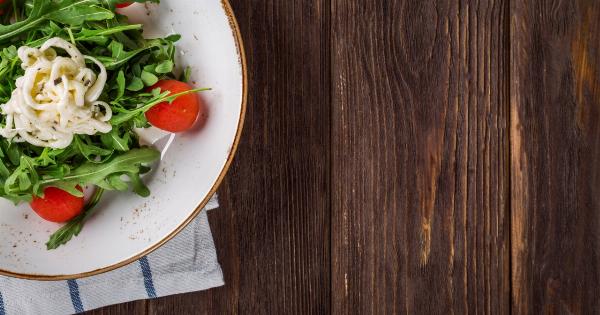A low-salt diet, also known as a low-sodium diet, involves reducing the amount of sodium consumed in your daily meals. Excessive sodium intake has been linked to various health concerns such as hypertension, heart disease, and stroke.
Therefore, it is important to implement guidelines that can help you maintain a low-salt diet, improving your overall well-being. In this article, we will discuss six guidelines that can assist you in reducing your salt intake while still enjoying delicious and nutritious meals.
1. Read Food Labels Carefully
One of the first steps towards adopting a low-salt diet is to become a savvy food label reader. Pay close attention to the sodium content listed on packaged food items. Food labels indicate the amount of sodium in milligrams (mg).
Choosing products with lower sodium content per serving can significantly contribute to your overall low-salt diet. Additionally, keep an eye out for terms such as “sodium-free,” “low-sodium,” or “reduced-sodium,” as these can help you identify suitable options.
2. Cook Fresh Foods at Home
When you prepare your meals at home, you have better control over the ingredients used, including the amount of salt added. Opt for fresh and minimally processed ingredients to reduce your sodium intake.
Fresh fruits, vegetables, lean proteins, and whole grains are excellent choices for a low-salt diet. Experiment with herbs, spices, citrus juices, and vinegar to enhance the flavors of your dishes without relying heavily on salt.
By cooking at home, you can tailor your meals to fit within your low-salt guidelines while enjoying delicious and nutritious food.
3. Limit Processed and Packaged Foods
Processed and packaged foods, such as ready-to-eat meals, canned soups, and snacks, often contain high amounts of sodium to preserve flavor and increase shelf life. These convenient options may not align with your low-salt diet goals.
An effective approach is to limit or avoid their consumption altogether. Instead, opt for fresh ingredients and prepare meals from scratch whenever possible. By reducing your reliance on processed and packaged foods, you can significantly lower your salt intake.
4. Be Mindful of Hidden Sodium
Sodium is not only found in obvious salty foods but also in some surprising sources. Condiments like soy sauce, ketchup, and salad dressings are notorious for containing high levels of sodium.
Therefore, make sure to read the labels of condiments and opt for low-sodium alternatives or consider making homemade versions. Additionally, be cautious of certain medications that may have hidden sodium content. Consult with your healthcare provider to explore alternatives with lower sodium content.
5. Incorporate Potassium-Rich Foods
Including potassium-rich foods in your low-salt diet can have a positive impact on your overall health. Potassium helps counterbalance the negative effects of sodium on blood pressure.
Some excellent sources of potassium include fruits like bananas, oranges, and avocados, as well as vegetables such as spinach and sweet potatoes. By including these foods in your diet, you can help maintain a healthy balance of electrolytes while reducing your sodium intake.
6. Practice Moderation and Gradual Reduction
Transitioning to a low-salt diet should be approached gradually and sustainably. Rapidly eliminating salt from your meals may lead to a taste aversion, making it harder to stick to your dietary changes.
Instead, practice moderation and reduce your salt intake gradually over time. Your taste buds will adapt, and you will begin to appreciate the natural flavors of food. Focus on adding flavor through herbs, spices, and other alternatives rather than relying solely on salt.
Patience and consistency are key to successfully adopting a low-salt diet for long-term health benefits.
Conclusion
By incorporating these six guidelines into your dietary habits, you can effectively reduce your salt intake and maintain a low-salt diet.
Remember to be mindful of hidden sodium, read food labels, cook fresh meals at home, and limit processed and packaged foods. Additionally, embrace the flavors of herbs, spices, and potassium-rich foods to enhance your dishes naturally. Practice moderation and prioritize gradual reduction to ensure long-term success.
By following these guidelines, you will be taking a significant step towards improving your overall health and well-being.































